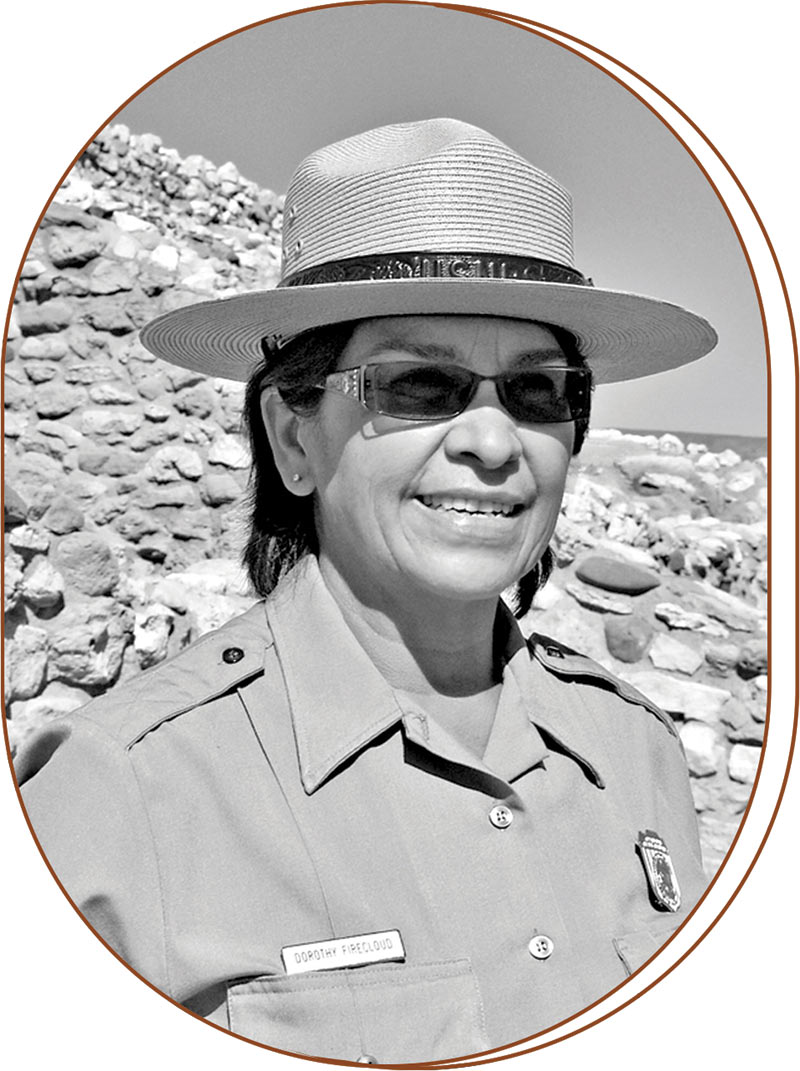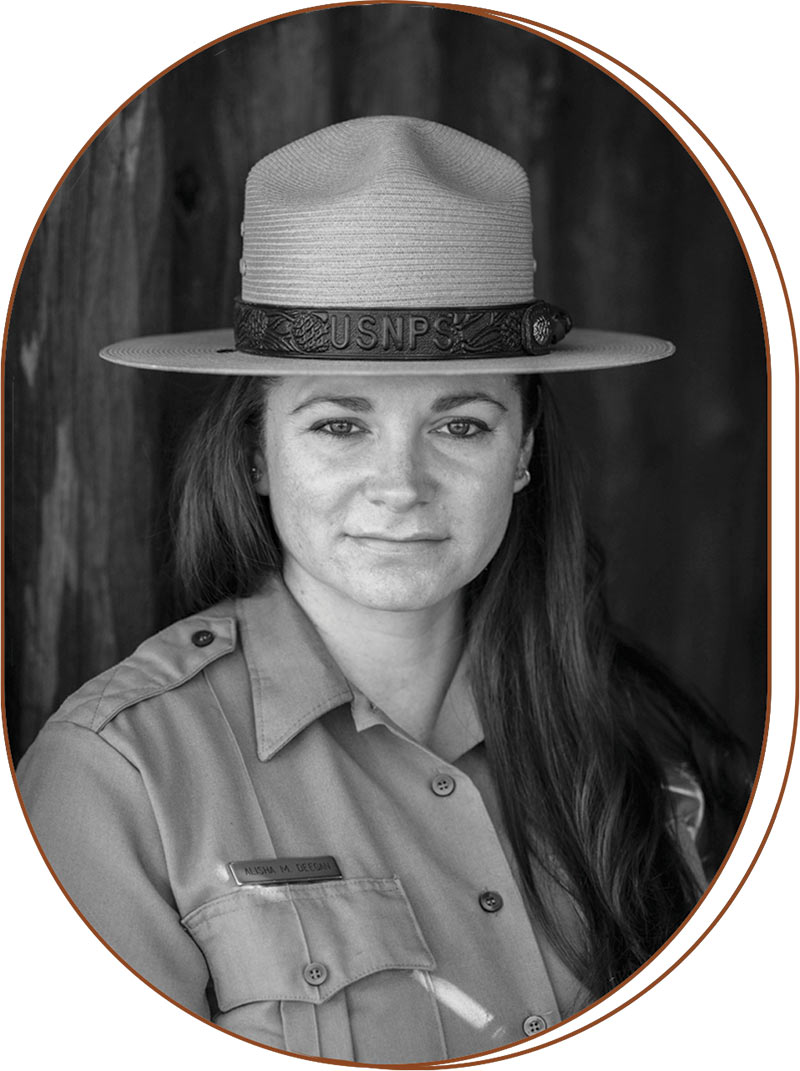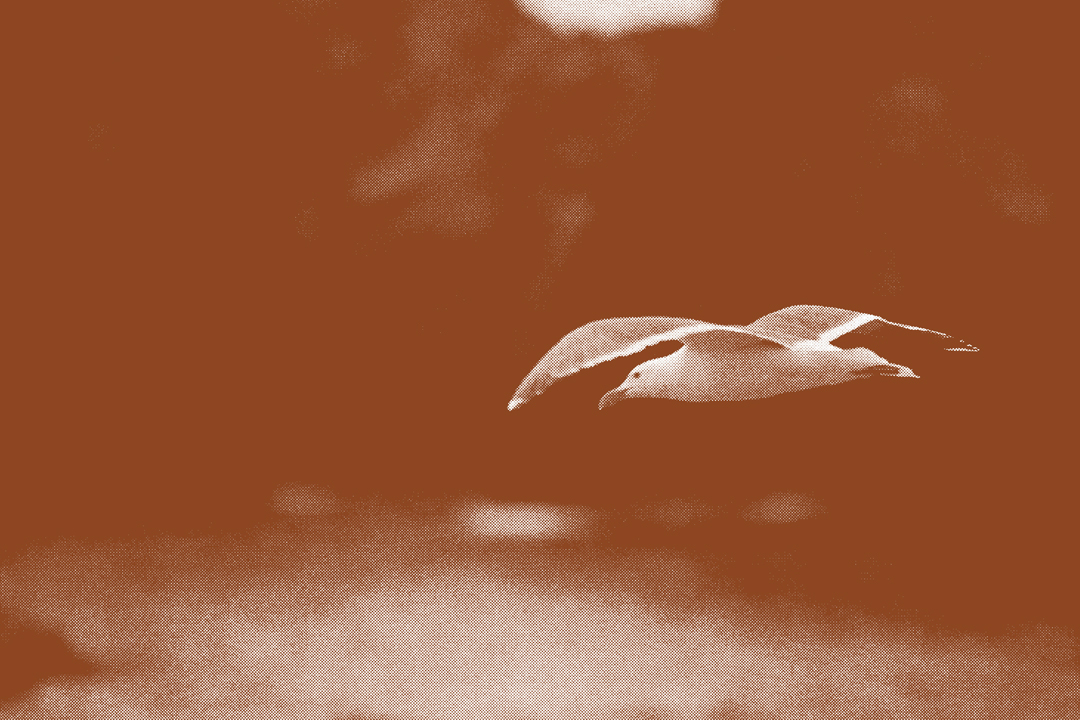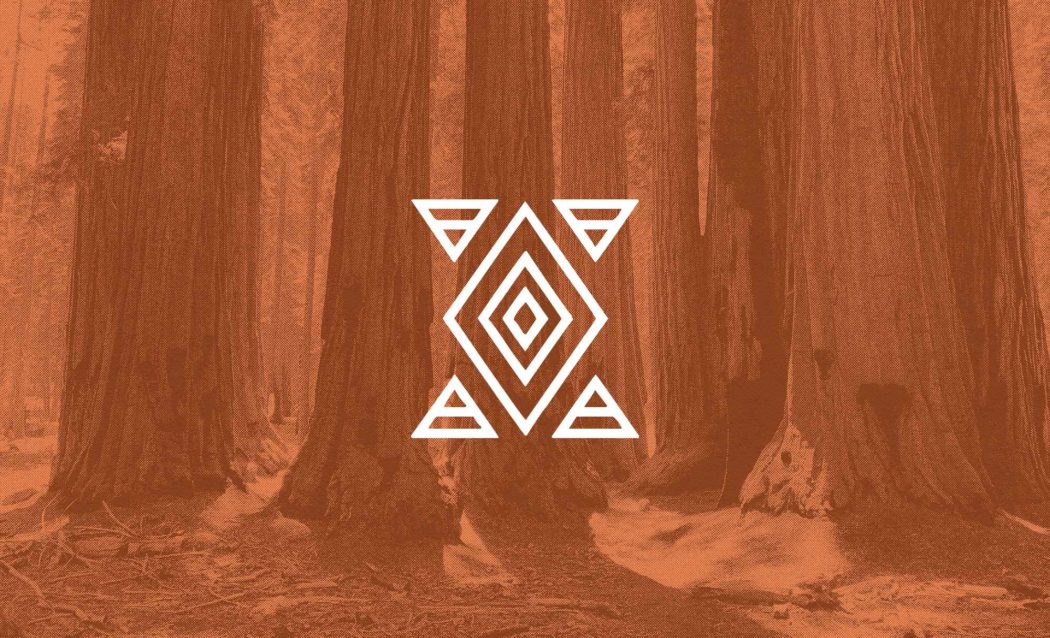How the National Park Service and Indigenous People are Working Together in 2022 and Beyond.
In any discussion or any entire magazine dedicated to national parks, the perspectives and contributions of Indigenous tribes have to be part of the conversation. This very much includes varying levels of what is called co-management of lands. Today, there are four parks within the NPS that have official-official co-management programs: Canyon de Chelly National Monument, in Arizona; Glacier Bay National Park, in Alaska; Big Cypress National Preserve, in Florida; and Grand Portage National Monument, in Minnesota. Then there are a number of parks operating with varying levels of tribal leadership and management. From preserving ecosystems using traditional native methods to putting Indigenous people in positions of authority within the park systems—superintendents, liaisons, and Department of Interior positions—these efforts are growing. In 2021 Deb Haaland became the first Native American woman to be appointed Secretary of the Department of the Interior. Whalebone interviewed some of the people doing the work.
Leadership in Parks

Dorothy Firecloud
National Park Service Native American Affairs Liaison
Dorthy on her Career Inside NPS:
I grew up on the Rosebud Sioux Indian Reservation in South Dakota and moved to Minneapolis in the early 1970s—I began working with Indian education in St. Paul then moved to Albuquerque, NM in 1978 to attend the University of Albuquerque. I received an associate’s degree as a legal assistant, a Bachelor’s degree in Legal Studies from the College of Santa Fe, and a juris doctorate from the University of New Mexico School of Law in May 1991. I passed the New Mexico State Bar in October 1991 and have been a member since that time. Shortly after passing the bar, I began working for the Bureau of Indian Affairs in Phoenix as a water rights specialist, working on several water rights cases within the SW. I did that until 1996 when I went to work for the Pueblo of Zuni to develop their water rights office through an Interagency Personnel Agreement. It was to develop their tribal staff to become familiar with the water rights adjudication they would be entering into at that time. I did that for two years and then went back to working with the federal government.
Shortly after returning to the Bureau of Indian Affairs, I applied for a position with the U.S. Forest Service as the Regional Tribal Liaison, in their Southwestern Regional Office in Albuquerque and began working there in the summer of 1998. I worked for the Forest Service from 1998 until 2006.
In 2005, I did a detail assignment with the Forest Service in the Black Hills National Forest in South Dakota. I enjoyed being back close to where I grew up. So shortly thereafter, I applied for the job as the superintendent of Devils Tower National Monument in Wyoming and was fortunate enough to get that. I stayed at the Tower (Mato Tipila) as the superintendent from 2006 until 2012. From there I moved to the Verde Valley of Arizona and became superintendent at Montezuma Castle and Tuzigoot National Monuments. I remained in that position until moving into the position that I currently fill, Assistant to the National Park Service Director as the Native American Affairs Liaison.
On the Relationship Between the NPS and Tribal Leaders
When I came in as the superintendent at Devils Tower (2006), Gerard Baker was superintendent at Mount Rushmore and his brother Paige Baker was superintendent at Badlands. So, of the five national parks that were located in the Black Hills National Forest area, three of the superintendents were Native American. That was quite a feat there for three of us to be in those positions, and all three of the NPS sites were fairly significant to tribal people.
There’s been a significant change and it’s been growing every year.
The effort of the National Park Service to really begin working with tribes and improving its relationships with tribes seemed to begin around this time or a little earlier. There’s been a significant change and it’s been growing every year. Currently, with both the Secretary of Interior and National Park Service Director being Native American, we have a whole new direction as far as stewardship of NPS units with tribes as well as through the incorporation of traditional knowledge into more of our natural and cultural resource projects.

Alisha Deegan
Superintendent of Knife River Indian Villages National Historic Site in North Dakota.
On the Responsibilities of Her Position:
I’m a citizen of Mandan, Hidatsa, and Arikara Nation. I get to live and work in parts of my ancestral homeland, the Hidatsa. The park here has three village sites that are historic archeological depressions of earth lodges. Sacagawea lived here when she was young, and then met her husband Charbonneau somewhere along the line, and then met Lewis and Clark at the sites of these villages here. A lot of people that follow along the Lewis and Clark Trail come here.
Because of this, we get a wide variety of individuals from all over the world wanting to learn about Lewis and Clark. We’ll get the question, “Well, do the Hidatsa still exist?” Yes, the Indigenous people still exist on the reservations here. But we have more members. There are about 16,000 members of the MHA Nation and it’s growing.
Our culture is still there. Our language is being actively revived. We still have the family systems and the clan systems. I’m seeing that revive and we’re seeing more interest in the park here.
Co-Management Program
Condor Release in California
Redwood National Park, Co-Stewardship
Redwood National and State Parks have been leaders for decades in the co-stewardship of ancestral territories. An important initiative has been working closely with the Yurok Tribe, as well as a few other local tribes, to return and restore the condor, considered sacred in Yurok culture, to the skies over the Pacific Northwest.
The U.S. Fish and Wildlife Service, the Yurok Tribe and National Park Services partnered up and began a very long compliance and planning process to support the endangered species.
Steven Mietz, Superintendent of Redwood National, explains, “We are working with the tribe to establish facilities to take care of the birds, located within the park and co-managed with the Tribes,and we are continuing to work with them on fundraising for this. It’s so great to leverage both the National Park Service and the tribal expertise in terms of fundraising and capacity. One of the key components that the tribes bring is their traditional ecological knowledge and their viewpoint into a program that we co-manage—a big part of what makes this program unique is that the Yurok Tribe truly is the leader. Although this is occurring within the park, we have really worked hard to let go of control, allowing space for the Indigenous voices and their traditional ecological knowledge to really take a forefront in how the program is built and implemented. It has led to a way for us to start to heal, not only heal the landscape by bringing back this apex scavenger, but also heal our relationship: We, the American people, the federal government’s relationship with the tribe, and the healing of their relationship with the land.”
A big part of what makes this program unique is that the Yurok Tribe truly is the leader.
Tiana Williams-Claussen, Wildlife Department Director for the Yurok Tribe, elaborates on the relationship between her people and the scavenger bird. “The restoration is important to the Yurok tribal people for a variety of reasons. The health of our region was certainly damaged by their local extirpation about 130 years ago. This loss was deeply impactful to us as Yurok people, as well as other tribal people, because of the
deep cultural relationship that we have with condors. Condor, or prey-go-neesh in the Yurok language, ties to our foundational reason for being, which is to be world renewal people or fix-the-Earth people. He’s [the condor] very important to the implementation of that obligation and to our world renewal ceremonies, known as our high ceremonies.
“Not having them here in Yurok country for so long not only left the soul wounded by missing this very important spiritual person in our world, but also left an ecological wound, as he’s not there to fulfill his traditional ecological role as a scavenger and a cleaner of the world. A panel of our elders, called the Tribal Park Task Force, made the decision to prioritize bringing prey-go-neesh back to Yurok ancestral territory all the way back in 2003, and got us started on that path in 2008.”

Gull Harvest Glacier Bay National Park
Co-Management | Bering Land Bridge National Preserve Compact Agreements with Kawerak in Alaska
Almost half of the federally recognized tribes in the United States are located in Alaska. Whalebone spoke with Alaska Native Tribal Relations Program Manager Maija Katak Lukin on tribal efforts in environmental work, education and infrastructure.
Some of those efforts include work on traditional gull egg harvesting, managing local construction projects and repairing weather shelters. Maija details the programs:
“Glacier Bay has this agreement with the Hoonah Indian Association to manage the gull egg harvest program. And prior to this agreement, a cultural tradition that has happened for millennia has been to harvest gull eggs in the springtime. And once the park and preserve were established, people were being reprimanded and given tickets for something that they’ve done for generations. The Hoonah Indian Association worked really hard with the Glacier Bay National Park and Preserve to ensure that this program could continue to take place without having an impact on the number of gulls that were there. The Hoonah Indian Association manages their gull egg harvesting program and they provide gull eggs to the elders.
“Bering Land Bridge National Preserve also has two public law 638* contracts or compact agreements with Kawerak, which is the nonprofit organization in Norton Sound in Northwest Alaska for several projects. They have a project for the Serpentine Hot Springs—a bunkhouse roofing repair project. Kawerak has the ability to manage that bunkhouse repair project and hire from villages or communities that are near that area of Serpentine Hot Springs. Something that we’ve heard continually is that people want to stay in their communities and provide services in those communities, and these kinds of co-management and cooperative agreements make that opportunity available to them.
“Kawerak also has an agreement for public use of shelter cabins for repair. Shelter cabins in Northwest Alaska are extremely important for people who are traveling in the wintertime, but are also available in the summertime as well. The weather in Northwest Alaska is unpredictable at best right now, and so storms come really quickly—having shelter cabins available for people is something that’s life-saving in a lot of instances. Kawerak has the opportunity to utilize this public law 638 to provide repair and maintenance for those shelter cabins.”
In addition, some tribes have created education programs to tell their own stories to tourists, with the cooperation of NPS, Maija says.
“So one example is at the Glacier Bay National Parks & Preserve. They have a collaborative agreement with the Hoonah Indian Association to implement cultural interpretation programming on the Holland America cruise ships and park waters and Alaska Native Voices Educational Institute. What that means is the Hoonah Indian Association has the opportunity to basically interpret and present that information to the cruise ship passengers who are visiting their ancestral homeland.
“That’s something that’s really important because the stories are coming from themselves, and Indigenous people of Alaska’s history are orally passed down through traditions, dances and stories then presented to the visitors on the ships.”
Looking to the Future
There is still lots of work to be done to repair relationships with tribes and their ancestral homelands, but the future looks good for the expansion of co-stewardship partnerships and annual funding agreements, as well as greater Indigenous leadership in the parks.
Grand Canyon National Park is dedicating the entire eastern end of the park to having tribal people tell their own stories.
We have more collaborative, cooperative and annual funding agreements in place than we do co-management agreements. Co-management is a narrowly defined concept and must have a legal nexus, which not many of the NPS units fall within the definition. However, we are looking for the number of co-stewardship partnerships and agreements to increase greatly in fulfillment of SO 3403. SO 3402 is a joint Secretarial Order between the USDA and the Department of Interior regarding co-stewardship. The National Park Service units have done an excellent job to date. We have about thirty agreements in place throughout the United States with tribes, working on a variety of projects. For example, Acadia National Park did a great project with the Wabanaki using traditional knowledge to determine the gathering of sweetgrass within the park. Redwood National Park worked with the Yurok Tribe on the condor release project, which recently successfully released several condors in northern California and is working with the tribe on the use of traditional knowledge to increase Roosevelt elk herds within the ancestral Yurok homelands. Grand Canyon National Park is dedicating the entire eastern end of the park to having tribal people tell their own stories. The park recently held an opening ceremony for the new ranger talk area that was renovated near Desert View Tower. The park is also working with tribes on bison management on the northern rim area. Lots of great projects are beginning to happen throughout the NPS units and I am looking forward to seeing the wonderful opportunities that will open up for co-stewardship projects in the future. It is an awesome time to be working in my position.

